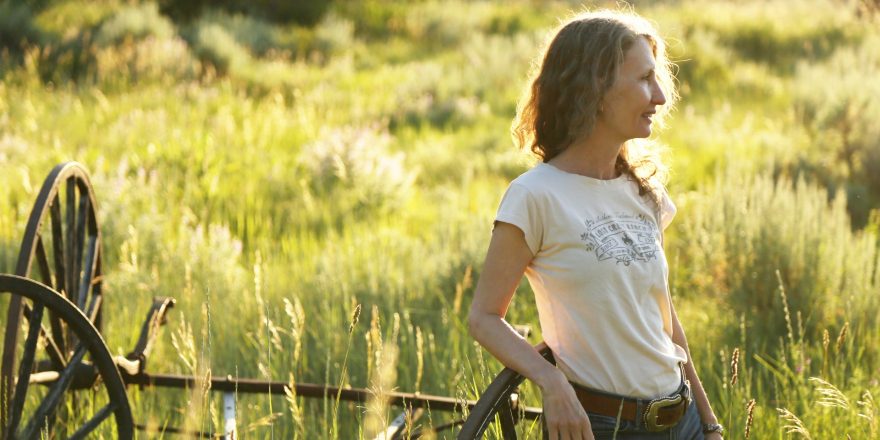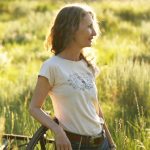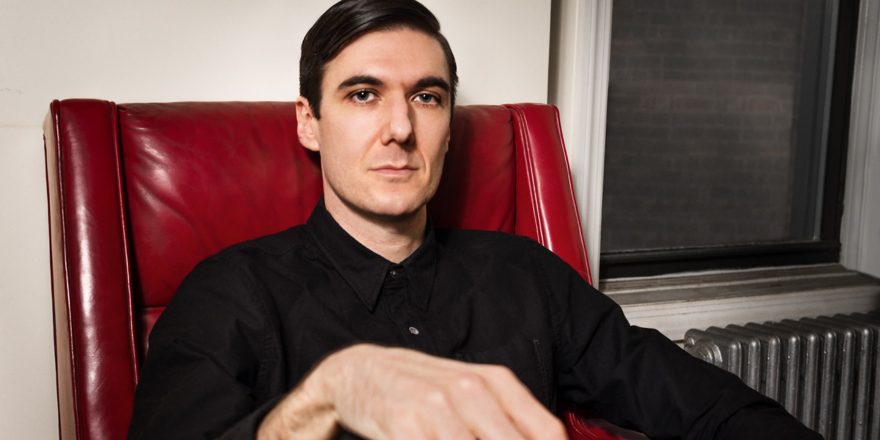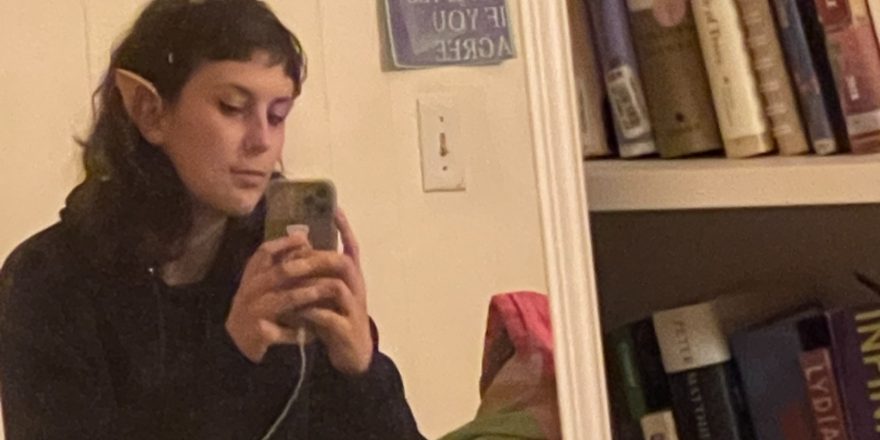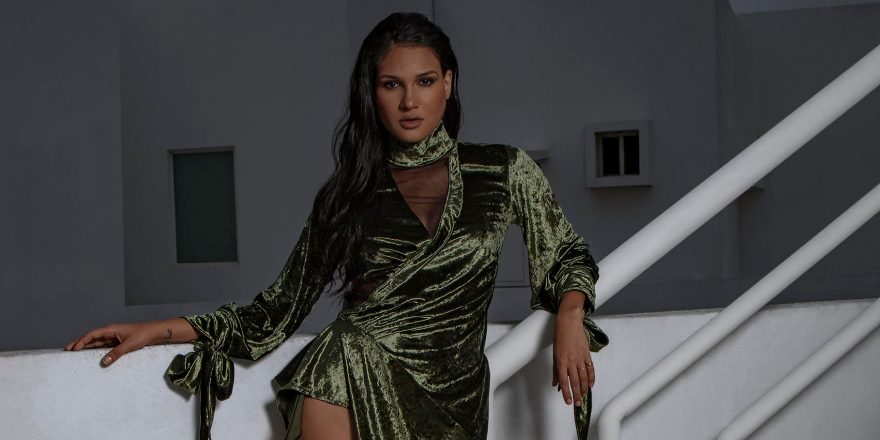Gig Economy is a Talkhouse series in which artists tell us about their work histories, from part-time pasts to the present tense, in order to demystify the many different paths that can lead to a career as a working musician. Here, Karen Haglof discusses ditching music for med school (and eventually finding a balance between the two).
—Annie Fell, Associate Editor, Talkhouse
I started working when I was about 15 at my mom’s job at Power Tools Inc., doing summer inventory, counting lawnmowers and chainsaws and snowmobiles and nuts and bolts. I had started playing guitar at 14, when there was school, part-time jobs like babysitting or counting inventory, riding horses, and playing guitars with my best friend in a church duo. I took guitar lessons at the local music store, and we learned songs off the radio and records. I didn’t really have a direction, while feeling pretty confident about life in general, and that there was plenty of time. I was out of the house by 19 and living in Minneapolis, having quit the University of Minnesota to play in my first real band. That band was an almost all-girl cover band playing rock tunes in clubs and small ballrooms around the upper Midwest. Our band was enough of a novelty to be on salary with a booking agent, and the $65 or so a week I got paid was ample to cover Minneapolis rent; we were on the road a lot and expenses were covered—professional musicians! This was the life!
That segued into the Minneapolis music scene, and bands with original material. Our cover band broke up, and singer Jan King and I had a songwriting partnership. We started a band called The Wad, rotating bass players and drummers, and got a song on Big Hits of Mid-America, Vol. III that Soul Asylum covered some ten years later. Our band stipend was gone; I got work in a music store as counter and simple-guitar-repair girl, nicknamed Boomer after the guitar strings.
Jan and I had a side gig running concessions at the State Theater in Minneapolis; TO THIS DAY the best job I ever had. The Kinks and the Tubes and Patti Smith Group and Cheap Trick and Tom Petty and The Runaways and Sweet would play at this two thousand or so seat theater in downtown Minneapolis. Jan and I would drive my Honda Civic out to the concession supplier early on show days, filling up the car with popcorn and fake butter and candy and pop. We would pop popcorn and set up the stand all day; We climbed a high ladder to change the marquee lettering, and drunks would shake the ladder and laugh as we threatened to drop the iron letters on them. We were there for load in and soundcheck and schmoozed with the road crews and sometimes the bands. We knew all the secret ways backstage to watch shows from the pit, and take home what was left of the catering. We gave our friends free concessions, hired other friends to help us during the rushes, charged a dollar for everything, and pointed to the water fountain when asked for diet drinks. We got a percentage of the take from the same production company that booked our cover band, and this could be pretty lucrative. Between that and working at the music store, writing songs and going to the clubs to hear all my friends play, life was full music immersion whether on a side gig or music gig, there was a lot of swagger and everything felt promising, and timeless.
I met up with Steve Almaas of the Suicide Commandos. Jan went west to LA and I went east to NYC with Steve in The Crackers, as the guitarist in a stripped down power-pop band. The change in scene was a culture shock and wakeup call. Whereas in Minneapolis I thought I was kind of a medium exotic fish in a smallish pond, I was most definitely a minnow in the ocean of NYC.
It was there that I found out no music store would hire me, that I was a terrible seamstress, and that time could go backwards while working in a bookstore. I eventually lied my way into a waitress job, found out I was a terrible waitress, then moved to short-order cook, then brunch chef, then chef and restaurant manager at various East Village restaurants, probably most notably the Great Jones Café at the beginning of its heyday.
Our band toured the East Coast, played the NYC scene, and made an EP before breaking up. The realities of trying to live in NYC definitely skewed the energy towards trying to make enough money to STAY in NYC; I still wanted to BE a musician, but I floated along a bit on that aspect, and used the take charge part of my persona to boss around the restaurant staff. I was never the songwriter or musical driving force then, like that short time in Minneapolis; I was the guitarist and backup vocalist and content to be the support and sideman. After the Crackers I fell into a more avant scene, playing with Robert Longo and then Rhys Chatham, where I played with some of the Band of Susans, and then became a Susan. Those days included making some records and doing some pretty great European and US touring, enough money to break even. The touring part was often achieved with major shift changing in the restaurant work, sometimes fudging return dates and having to grovel to get back into the job.
Well, what happened then? I was living in New York, playing with the Susans, working in a restaurant called the Levee. One morning while prepping brunch, I realized I didn’t want to be cooking brunch in 10 years. I had no clue what I actually wanted to do to make money; I thought about going to culinary school but that seemed like cementing a career from a job that I hadn’t chosen willingly in the first place. Although I had always been content to be a side and support guitar player, I couldn’t see myself moving that way to a position where I wouldn’t need to have some kind of job. I wanted more than a job.
So I quit playing. I went back to college and decided to go full throttle into medicine. Playing on my “interesting background,” I felt again like a medium exotic fish, this time against a waterfall with a fair amount of other exotics. But I did stand out enough to get into medical school.
Medical school was where time management took on mythic proportion; guitar playing was barely a thought. 168 hours in a week were parsed into study blocks and travel blocks and class blocks and clinical blocks. Everything was grids and schedules to make maximal use of time and resources. I played a one-off gig for a contemporary ballet piece before the third-year clinical rotations. Then I graduated, got into a medicine residency in Florida, and came back to NYC after to finish training, and to stay and practice medicine. I didn’t pick up a guitar again for 10-12 years.
Hematology and oncology became my calling during internship in Gainesville, Florida. I was drawn to the mechanics of blood disorders and malignant diseases, made real in the faces and lives of my patients. A cure—winning!—prideful exhilaration. In Gainesville, a man once stopped his pickup truck to roll down the window to say “I’d be dead if it weren’t for you.” Never mind that I KNOW I did not do anything alone. The losses are devastating personally and professionally; hard to take, again and again.
Medicine for me is consuming and rewarding and painful all at once. Days start early; out the door by 6:30 am to the office to prepare for the day, or to the hospital if needed. There are usually two “new” patients—those sent by other doctors to assess and manage a blood problem or cancer. Interspersed would be the “old” patients, already being monitored, or on treatment, often chemotherapy or biologic or immunotherapy. Always there is coordination to manage; there may be changes in treatment to discuss with the nurses, tests for the staff to order, and the insurance maze to be run. The whole process is coordinated but has to have some “play,” in case an urgent problem or emergency pulls focus. There are discussions with patients, families and other physicians about how “things” are going; what’s the prognosis? When all is going well, these are happy, or at least neutral events. Sometimes they are not so good, as when the plan is not working and needs to be changed. Sometimes these meetings are terrible, when treatments are exhausted, the disease is progressing, and hope is ending. There are phone calls, texts and emails all day, and into the evening. Then home by six pm, or seven, or later, sometimes wondering where to put all the emotions, and mental lists of reading to keep up with the latest, to provide the best possible care. Weekends are lighter, but something always needs catching up.
At some point of total immersion of medicine, some kind of counterbalance felt necessary, as the pendulum seemed swung too far one way. Those first loves of horses and the guitar came back. I started riding the trails out west. I pulled out the guitar and relearned a few things, then started working in open D on my own chord progressions. I wanted to be able to play solo, never expecting to work in a group again. But then a simple idea of recording something, maybe to make a video, came to mind. Old Crackers mate Steve Almaas stepped up and encouraged me to write and sing and think further than I had, and he has been producing my projects since. Since 2010 when the guitars came back out, I’ve been able to put out two full length albums, and an EP, mainly of my own material. There is more to come.
The music process is now ongoing, interwoven within a 60-70 hour medical practice work week. My early mornings, up at 4:00 AM by choice, give me a couple hours to myself. Lyrics may pop up, or there may be a guitar line to practice nearly silently on a non-electrified electric. During the work day there might be some la-la-la of a new melody into the phone or scribbling down lines between patients and phone calls and texts and emails. At the end of the day, a riff in the brain might occupy the full way home—if it does, that’s a pretty good sign. Then demo at home, send out to various participants, maybe apartment run through, and then, studio time. The studio is my best fun now, a luxury that I am lucky to afford—to be able to go to a studio, and lay down tracks, hearing my music and ideas come to life.
This is the first time I really feel it is my music, my ideas, daring to show what I’m about in songs and sensibility. In the past few years I have felt a new confidence in my own musical decisions, maybe fueled by medical training and experience, as I have a clear sense of no more time to waste, seeing how lives can change in a moment. There is no more luxury of feeling of time stretching endless forward, or going backward like in the bookstore; there is only what I can get done now. I don’t directly write about patient experiences, but they are always there; the emotions get channeled into songs about horses and love, and loss and cowboys and cowgirls and breakfast and sick cats, among other things. The work I do now indirectly informs the music, and the music is something I count on. It helps me feel balanced, in this balancing act I’ve got going now.



